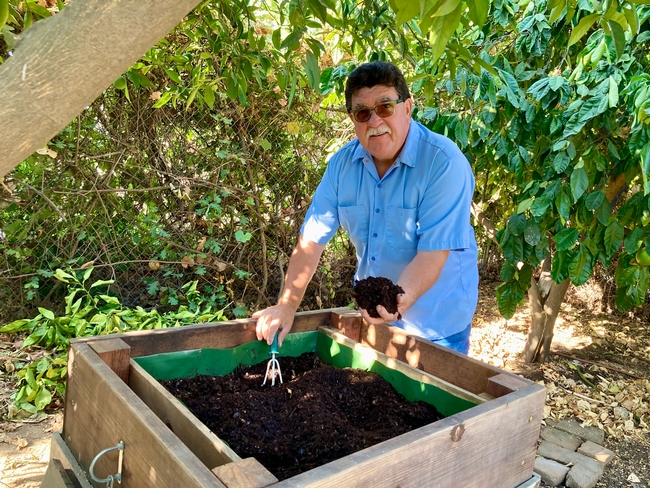- Author: Jeannette Warnert
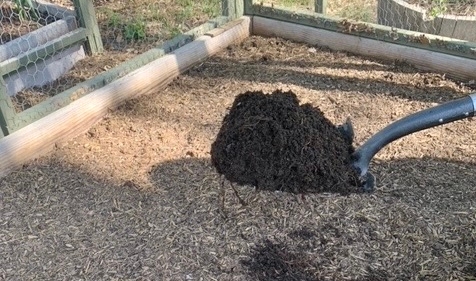
As a start, spread organic mulch on the top of soil to boost its quality over time. As the mulch breaks down, soilborne organisms slowly churn it back into the soil and eventually move it through the soil profile. Spread leaves, pine needles, small trimmings, grass clippings, wood chips or straw two- to four-inches deep on the surface and let the soil microorganisms do the work. The addition of water in the summer will help the mulch break down.
Step up your soil building game by adding plenty of compost. This is the technique UC Master Gardener Randy Thomson recommends in his Madera and Fresno county classes. Thomson joined the MG program in 2011 when he lived in Los Angeles County. Three years later he became a Master Composter in Orange County. In 2018 he moved to Madera County and localized his teaching on traditional and worm composting.
“In urban areas, developers scrape off the topsoil and compact the dirt before building a home's foundation,” Thomson said. “How do you grow in that? We need to rebuild what was optimized for construction, garden in raised beds or grow plants in pots. In soil with organics, you can actually grow food.”
Thomson's interest in soil building began when, during his teen years, his foster mother took him to the family farm in Oregon's fertile Willamette Valley.
“I loved it. There's a logic to living with agriculture. Ag is a lot about listening and observing how to use an environment without destroying it,” he said. He has applied this concept to gardening, and prefers to “keep things simple.”
“Good soil is 50 percent air and water. Forty-five percent is sand, silt and clay. The last 5 percent is organic matter, more specifically, compost,” Thomson said.
This formula leads to a soil capable of supporting worms, bacteria, fungi, protozoa, nematodes and micro arthropods that eat each other, embody the nutrients and make them available for plants.
“Compost is all you need,” Thomson said. “If you take care of the soil, the plants will take care of themselves.”
Another benefit: with a little labor, compost is free. The inputs – plant trimmings, grass clippings, leaves and food scraps – are generated in and around the home. Follow Master Gardener composting instructions to transform them into a rich soil amendment.
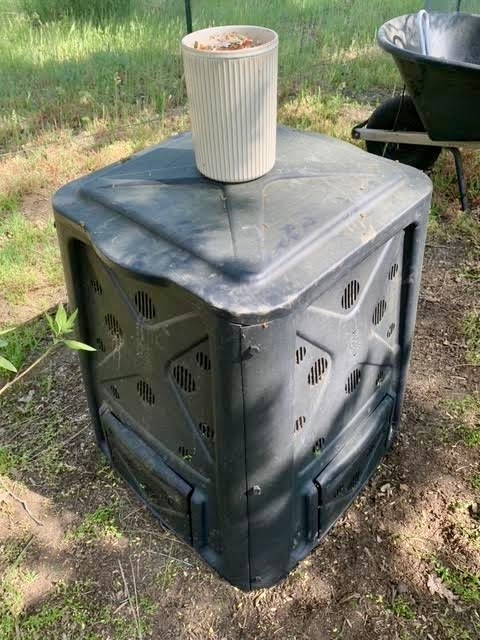 Collect food scraps. |
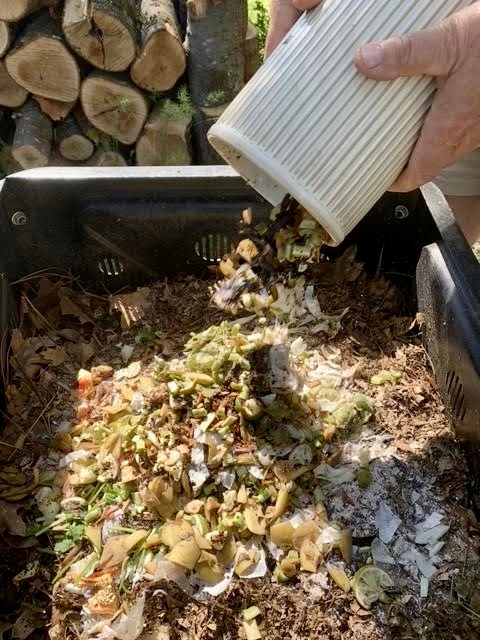 Add food to the top of bin. |
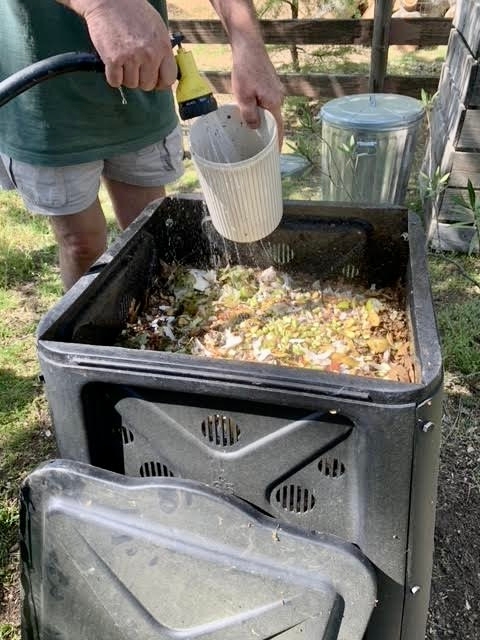 Add water. |
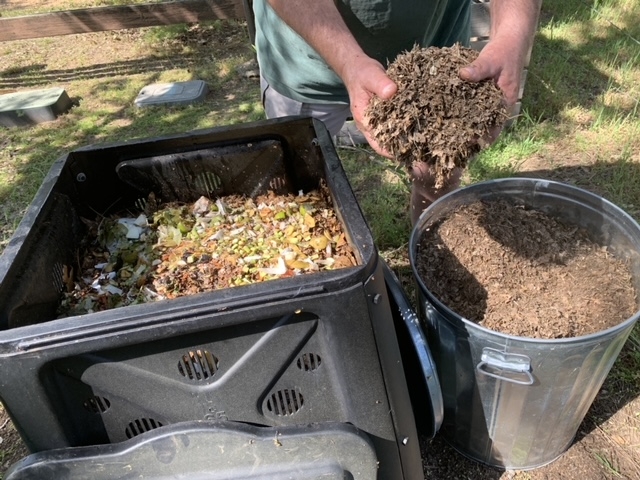 Add shredded dry leaves. |
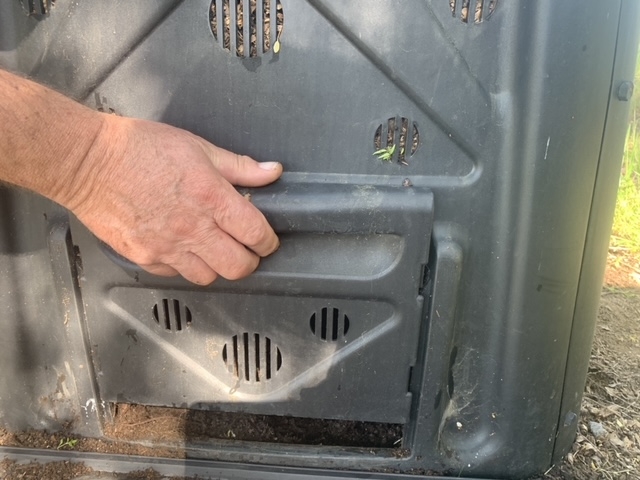 Over time, contents compost. |
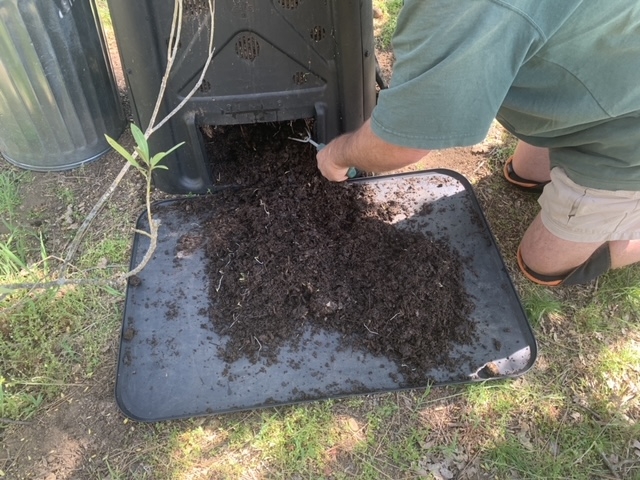 Harvest from the bottom. |
|
The cold composting method doesn't require gardeners to regularly turn the pile, which can be labor intensive. |
||
Another Master Gardener, Tony Carrasco of Fresno County, uses compost, and has gardened successfully with the use of other organic fertilizers, such as steer manure, bone meal, blood meal, fish emulsion and worm castings.
“I use soil amendments because I saw it was working for farmers in the field,” he said. “I was always planting and experimenting. I noticed that this stuff works.”
When Carrasco was a child, he and his siblings worked in orchards, packing houses and fields when school was out of session. At age 17, he got a job installing air conditioning. “That's when I said, ‘No more field work for me.'” But he never lost his fascination with growing things.
After retirement, Carrasco became a Master Gardener. He is one of three managers at the program's demonstration garden, Garden of the Sun. He adopted several garden plots at the MG garden and at the community garden in Kingsburg, plus he gardens at home.
“Twice a year I till in compost, horse and cow manures and organics I buy in bulk at a nursery near Sacramento,” he said. “I don't have a formula. I've gotten to where my vegetables come out pretty good.”
Carrasco experiments with worm composting and introducing fungi to break down organic materials in the soil. He said he has also tried bokashi composting, a Japanese composting method that ferments food waste in an anaerobic environment with effective microorganisms and bokashi bran. (Learn more from Bokashi Fermentation by Dr. Michael Vincent Rodriguez, UC Merced on YouTube.)
Carrasco's gardens produce a bounty of beautiful produce, much more than his family can use. He donates the excess to friends, neighbors and the Kingsburg Senior Center.
“Of course, there is a cost. But for me, the return is the joy of gardening. It's a joy to share,” he said.
For more information about composting, download a two-page brochure in a printable pdf format here.

